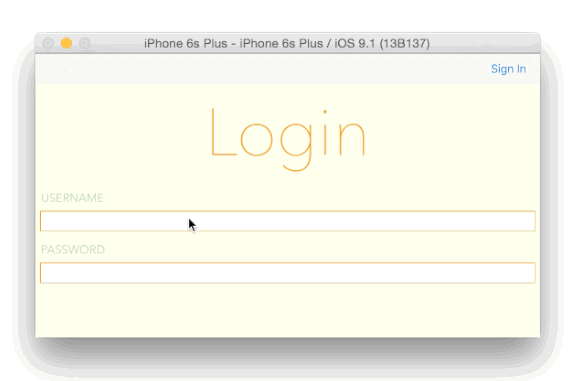The answer you have linked is not recommended. You should not set the view controller view's frame directly, especially not if you are using auto layout. Instead of changing the view's frame you should add a scrollview as a subview to the view, and adjust the content inset when the keyboard is shown or hidden.
From the official apple doc:
When asked to display the keyboard, the system slides it in from the bottom of the screen and positions it over your app’s content. Because it is placed on top of your content, it is possible for the keyboard to be placed on top of the text object that the user wanted to edit. When this happens, you must adjust your content so that the target object remains visible.
Adjusting your content typically involves temporarily resizing one or more views and positioning them so that the text object remains visible. The simplest way to manage text objects with the keyboard is to embed them inside a UIScrollView object (or one of its subclasses like UITableView). When the keyboard is displayed, all you have to do is reset the content area of the scroll view and scroll the desired text object into position. Thus, in response to a UIKeyboardDidShowNotification, your handler method would do the following:
- Get the size of the keyboard.
- Adjust the bottom content inset of your scroll view by the keyboard height.
- Scroll the target text field into view.
// Called when the UIKeyboardDidShowNotification is sent.
- (void)keyboardWasShown:(NSNotification*)aNotification
{
NSDictionary* info = [aNotification userInfo];
CGSize kbSize = [[info objectForKey:UIKeyboardFrameBeginUserInfoKey] CGRectValue].size;
UIEdgeInsets contentInsets = UIEdgeInsetsMake(0.0, 0.0, kbSize.height, 0.0);
scrollView.contentInset = contentInsets;
scrollView.scrollIndicatorInsets = contentInsets;
// If active text field is hidden by keyboard, scroll it so it's visible
// Your app might not need or want this behavior.
CGRect aRect = self.view.frame;
aRect.size.height -= kbSize.height;
if (!CGRectContainsPoint(aRect, activeField.frame.origin) ) {
[self.scrollView scrollRectToVisible:activeField.frame animated:YES];
}
}
// Called when the UIKeyboardWillHideNotification is sent
- (void)keyboardWillBeHidden:(NSNotification*)aNotification
{
UIEdgeInsets contentInsets = UIEdgeInsetsZero;
scrollView.contentInset = contentInsets;
scrollView.scrollIndicatorInsets = contentInsets;
}
